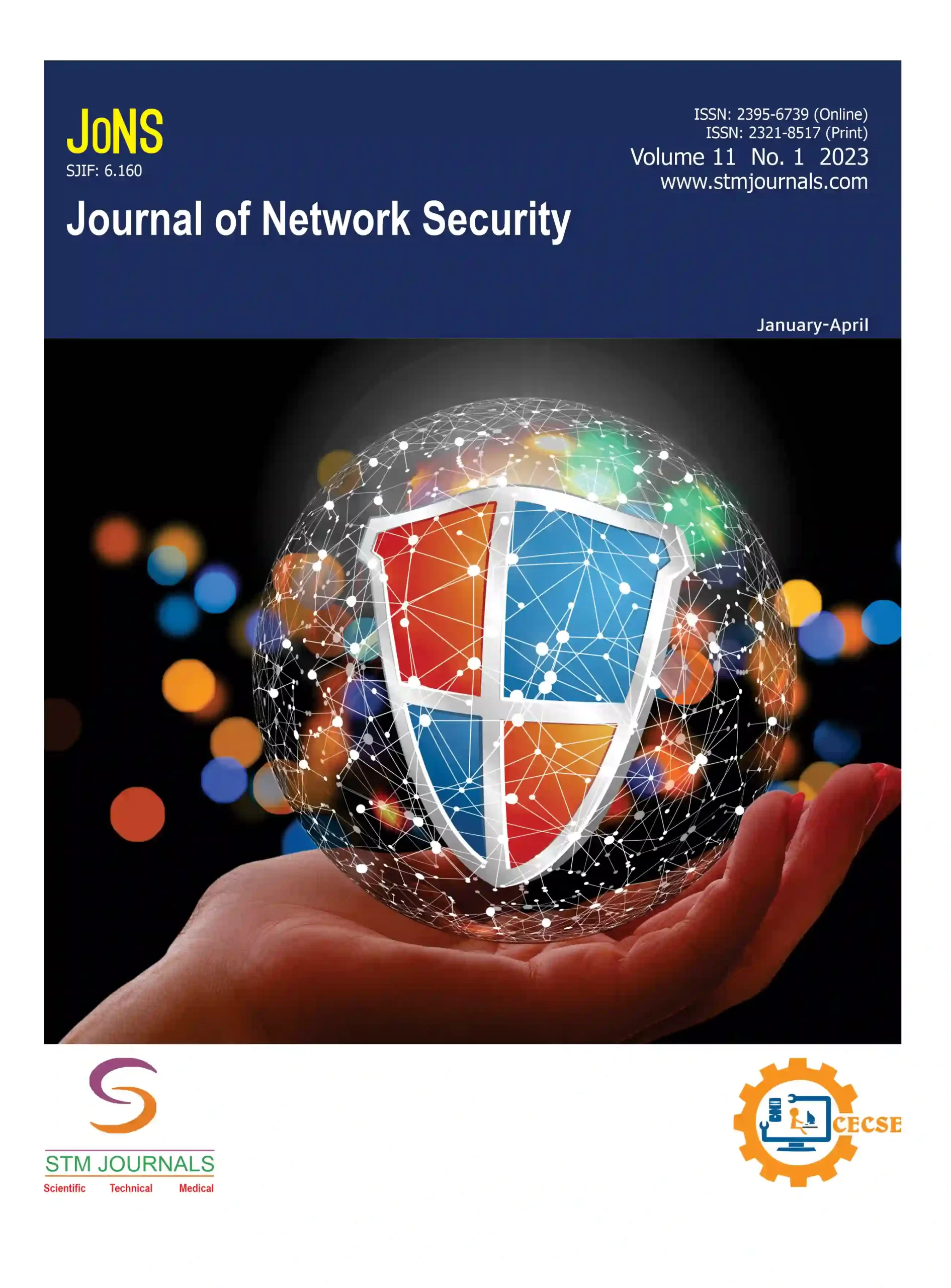
J. Dhiviya Rose,

Kaushal Tiwari,

Priyanshee Sethi,

Tanya Goyal,

Sakshi Sati,
- Assistant Professor-Selection Grade School of Computer Science, University of Petroleum and Energy Studies (UPES), Bidholi, Dehradun Uttarakhand India
- Student School of Computer Science, University of Petroleum and Energy Studies (UPES), Bidholi, Dehradun Uttarakhand India
- Student School of Computer Science, University of Petroleum and Energy Studies (UPES), Bidholi, Dehradun Uttarakhand India
- Student School of Computer Science, University of Petroleum and Energy Studies (UPES), Bidholi, Dehradun Uttarakhand India
- Student School of Computer Science, University of Petroleum and Energy Studies (UPES), Bidholi, Dehradun Uttarakhand India
Abstract
Malware refers to malicious software intentionally created to damage or exploit computer systems, networks, and devices. Malware can steal information, damage computers, and cause other problems disrupting normal computer operations, or gaining unauthorized access to systems. Our proposed system, “IMAT (Intuitive Malware Analyzer Tool)” uses special Python tools like VirusTotal and YARA to look for and understand malware. Imagine having a guard for your computer that checks all the files to make sure they are safe. That is what our Malware Analyzer does, a helpful tool created using Python. The proposed system is designed to check files where it looks at files to see if they might be harmful. It can also ask VirusTotal, a big online database, if the file is known to be bad. Finding Bad Patterns which are common in malware using YARA helps it catch even new kinds of malware. It is designed to create easy-to-read reports so that people can understand what it found and how to stay safe. Our Malware Analyzer proves beneficial for individuals seeking to safeguard their computers against malicious software. It makes finding and stopping malware easier, which helps everyone stay more secure online. In this project, we will explain how to use our analyzer to protect your digital world.
Keywords: Malware, YARA, VirusTotal, analyzer, security
[This article belongs to Journal Of Network security(jons)]
References
- Talukder S. Tools and techniques for malware detection and analysis. arXiv preprint arXiv:2002.06819. 2020 Feb 17.
- Zolkipli MF, Jantan A. Malware behavior analysis: Learning and understanding current malware threats. In 2010 IEEE 2nd International Conference on Network Applications, Protocols and Services. 2010 Sep 22; 218–221.
- Aslan Ö, Samet R. Investigation of possibilities to detect malware using existing tools. In 2017 IEEE/ACS 14th International Conference on Computer Systems and Applications (AICCSA). 2017 Oct 30; 1277–1284.
- Peng P, Yang L, Song L, Wang G. Opening the blackbox of virustotal: Analyzing online phishing scan engines. In Proceedings of the Internet Measurement Conference. 2019 Oct 21; 478–485.
- Maier D, Müller T, Protsenko M. Divide-and-conquer: Why android malware cannot be stopped. In 2014 IEEE 9th International Conference on Availability, Reliability and Security. 2014 Sep 8; 30–39.
- Jamalpur S, Navya YS, Raja P, Tagore G, Rao GR. Dynamic malware analysis using cuckoo sandbox. In 2018 IEEE 2nd international conference on inventive communication and computational technologies (ICICCT). 2018 Apr 20; 1056–1060.
- Leka C, Ntantogian C, Karagiannis S, Magkos E, Verykios VS. A Comparative Analysis of VirusTotal and Desktop Antivirus Detection Capabilities. In 2022 IEEE 13th International Conference on Information, Intelligence, Systems & Applications (IISA). 2022 Jul 18; 1–6.
- Naik N, Jenkins P, Cooke R, Gillett J, Jin Y. Evaluating automatically generated YARA rules and enhancing their effectiveness. In 2020 IEEE Symposium Series on Computational Intelligence (SSCI). 2020 Dec 1; 1146–1153.
- Chakkaravarthy SS, Sangeetha D, Vaidehi V. A survey on malware analysis and mitigation techniques. Comput Sci Rev. 2019 May 1; 32: 1–23.
- Ucci D, Aniello L, Baldoni R. Survey of machine learning techniques for malware analysis. Comput Secur. 2019 Mar 1; 81: 123–47.

Journal Of Network security
| Volume | 12 |
| Issue | 01 |
| Received | February 3, 2024 |
| Accepted | February 8, 2024 |
| Published | April 4, 2024 |

